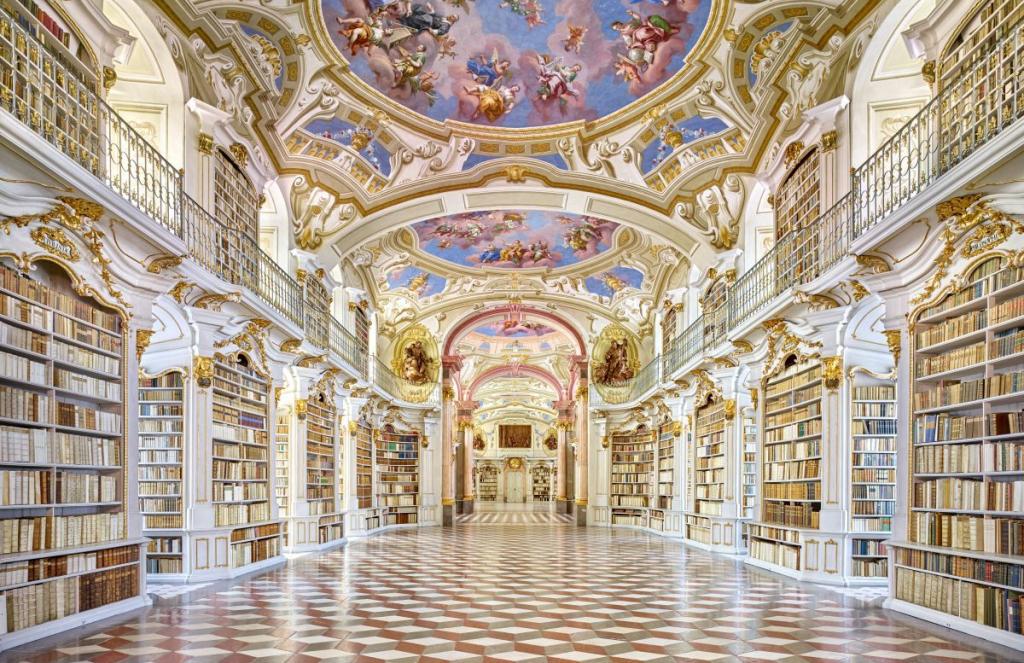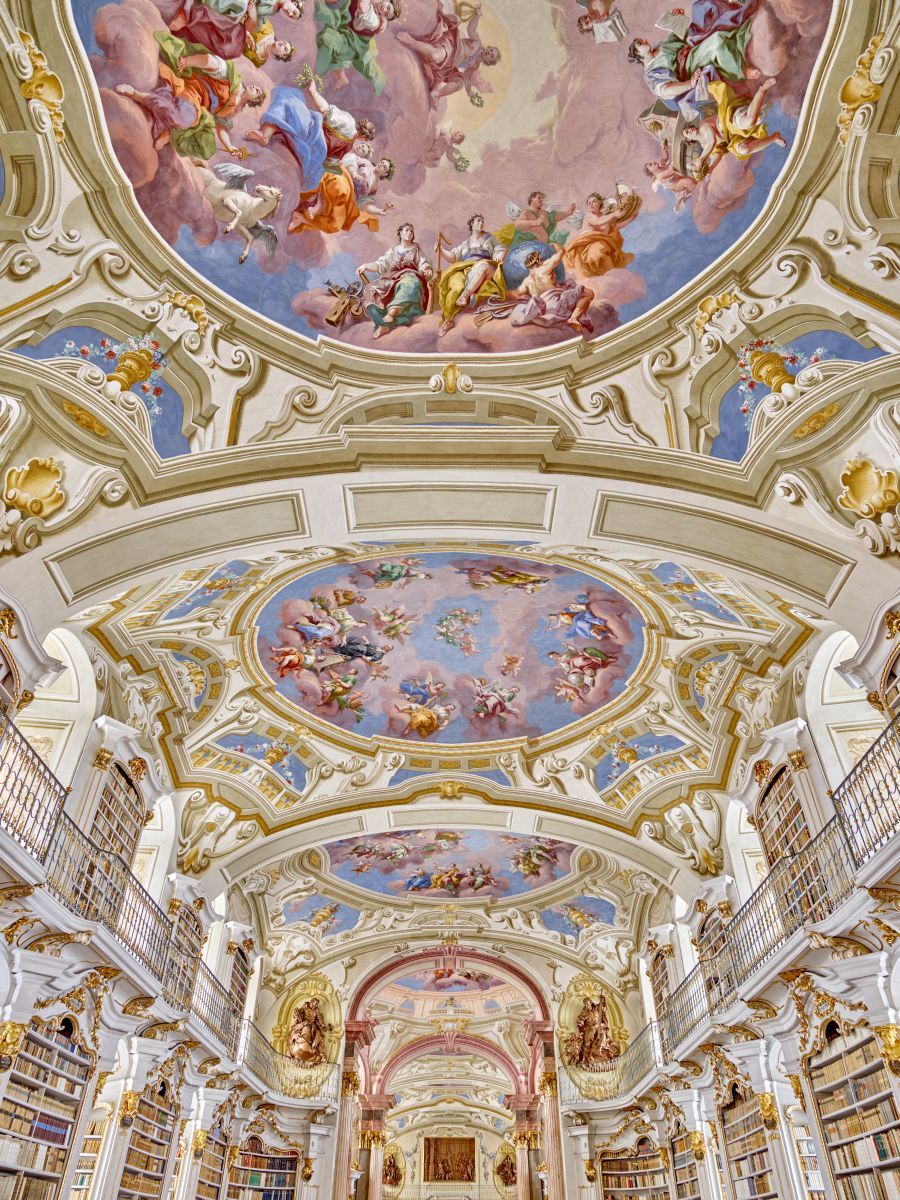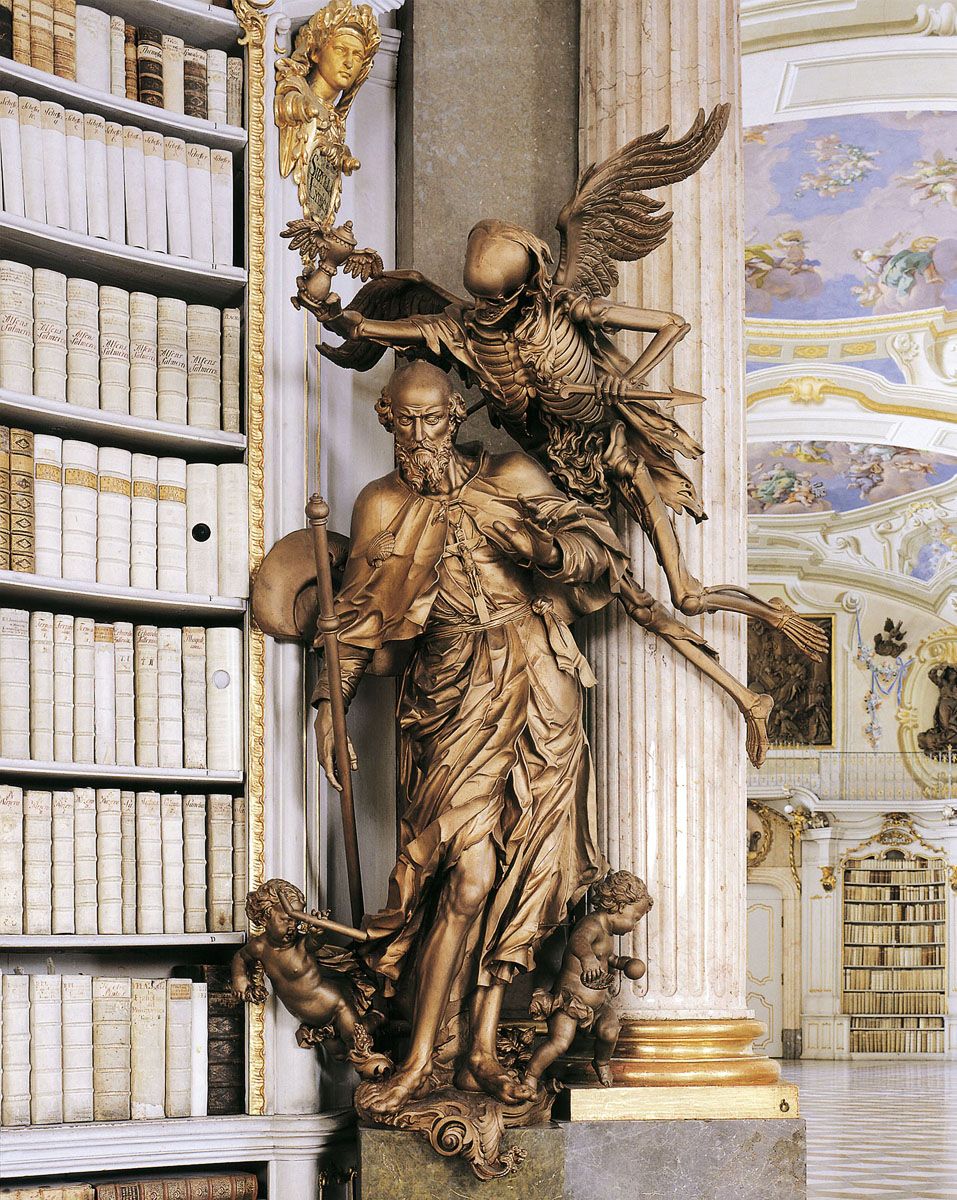Thessaloniki gets ready for its metro launch in November
The underground rapid transit lines have been under construction for almost two decades due to various project delays
 TheMayor.EU logo
TheMayor.EU logo 
The Enlightened architect wanted to make the room exude light, Source: © Marcel Peda, Admont Monastery
The world’s largest monastic library was built with light in mind, so at night, it will be viewed with lanterns
The Admont Abbey in Austria is now offering night tours of its library. Equipped with lanterns, visitors will be able to experience the giant Benedictine marvel of baroque architecture in a more romantic atmosphere.
The first guests of the night tour came on 29 July and, starting August, the Abbey will allow night-time guests into the library every Thursday after 9 PM.
The library in the Admont Abbey is the largest monastic library in the world, with its hall measuring 70 metres in length, 14 metres in width and 13 metres in height. It has 70,000 tomes on display, with a total collection of 200,000.
Some of the most valuable books are the manuscripts from the 8th century and the 530 incunabula, books or pamphlets printed before the 16th century. St. Peter’s Abbey in Salzburg gifted the oldest books to Admont's founder - Archbishop Gebhard, who settled here in the mid-11th century.
 The surreal frescoes of the library,
The surreal frescoes of the library,
Source: © Marcel Peda, Admont Abbey
The library's builder was Josef Hueber who completed his opulent Baroque opus in 1776 after 12 years of construction. He was also committed to the ideas of the Enlightenment, as he interwove these concepts into the design itself.
Consequently, the main idea for the library was “Like the mind, the room should also be filled with light”. This is why the room is so bright and the ceilings so tall, giving an overall airy feeling.
Bartolomeo Altomonte, a painter and equally enlightened mind, was responsible for the ceilings and frescoes. The images show the stages of human knowledge, from thinking and speaking through the sciences to divine revelation in the central dome.
 One of the 'Four Last Things' - Death,
One of the 'Four Last Things' - Death,
Source: © Marcel Peda, Admont Abby
The Abbey’s own sculptor – Joseph Stammel, on the other hand, carved the sculptures from lime wood. The most striking ones are the “Four Last Things” – depictions of Death, Judgment, Heaven and Hell, standing in stark contrast to the architect's design in celebration of light.
If you want to keep up with how European cities and regions are changing, follow us on Facebook, Twitter and Instagram.

The underground rapid transit lines have been under construction for almost two decades due to various project delays

Now you can get your wine in Talence by paying directly in Bitcoin

That’s because the state has to spend money on updating the railway infrastructure rather than subsidizing the cost of the popular pass

Rethinking renewable energy sources for the urban landscape

The examples, compiled by Beyond Fossil Fuels, can inform and inspire communities and entrepreneurs that still feel trepidation at the prospect of energy transition

Now you can get your wine in Talence by paying directly in Bitcoin

The 10th European Conference on Sustainable Cities and Towns (ESCT) sets the stage for stronger cooperation between the EU, national and local level to fast track Europe's transition to climate neutrality.

At least, that’s the promise made by the mayor of Paris, Anne Hidalgo

The underground rapid transit lines have been under construction for almost two decades due to various project delays

At least, that’s the promise made by the mayor of Paris, Anne Hidalgo

Hostal de Pinós is located in the geographical centre of the autonomous region

Despite its church-y name, the district has long been known as the hangout spot for the artsy crowds

Urban dwellers across the EU are having a say in making their surroundings friendlier to people and the environment.

Forests in the EU can help green the European construction industry and bolster a continent-wide push for architectural improvements.

Apply by 10 November and do your part for the transformation of European public spaces

An interview with the Mayor of a Polish city that seeks to reinvent itself

An interview with the newly elected ICLEI President and Mayor of Malmö

A conversation with the Mayor of Lisbon about the spirit and dimensions of innovation present in the Portuguese capital














